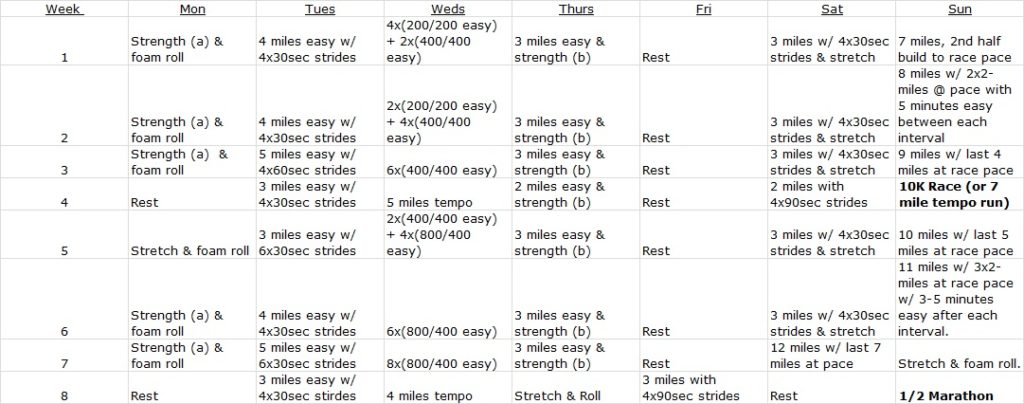
Half Marathon Training
fitness newton running athletes24 January 2017
How do you train for a 13.1 mile race? Getting yourself ready to tackle your first half marathon isn’t all physical preparation, but the mental and emotional piece of it is just as important!
Newton Running Ambassador and Coach Steve Johnson shares with us his half marathon training schedule that will get you ready to tackle your first 13.1 mile race in just 8 weeks!
*Please note this training schedule is designed for runners who are currently running around 20 miles a week, with a frequency of 4-5 runs, with occasional speed workouts.

See below for an overview of what your training entails:
*Easy runs: These runs are meant to be a executed at a conversational pace and never higher than a 6-7 on a 1-10 scale with ten being the hardest. Try not to race yourself, your GPS or your training partner during easy runs. Save that for the days that include fast running! If you’re mindful of form (quick feet, tall posture, firm core, etc.), you can almost never run too slow for your easy runs, especially on those easy days for key speed sessions.
*Strides: These are simply short bursts of speed to help remind your body of what it’s like to run fast. Build into these efforts rather than going into a full sprint right off the bat. Gradually get faster until you’re at ~5K pace, or slightly faster, for the last few seconds of each stride. Maintain form and give yourself equal/greater rest to work for the duration of the strides that you’re doing…so if you’re doing 30-second strides, give yourself at least 30-seconds of easy running before starting the next one.
*Pace: This is your goal pace for the half marathon and you’ll see these efforts during your weekly long runs. You want to get accustomed to the pace at which you plan on running for the race.
*Speed work: You’ll notice 200s, 400s and 800s on your Wednesday speed sessions. These distances can also be substituted with 1/12 mile, ¼ mile, ½ mile respectively. 200s and 400s should be at 5K pace or slightly faster. For the 800s, you’ll want to target 10K pace or slightly faster. These do not have to be done on a track. These can be executed on the treadmill, road or track – whichever happens to be most convenient for you.
*Long runs: Long runs increase in distance from 7 miles in week one, to 12 miles in week seven, culminating with 13.1 miles for your race in week eight. You’ll notice that there’s often pace work during the second half of your long runs. This is to help keep you honest during the first part of your long runs so that you still have energy left at the end to finish strong. This should also help with your racing by teaching you how to pace yourself at the start and set you up for a fast finish.
*Tempo runs: These are runs designed for you to start easy, build your effort to between ½ marathon and 10K pace in the middle, then hold it for a mile or two before a brief cool down jog.
*10K Race: You have a lighter week in week four, and concludes with a 10K race to get you in the mindset of racing and to work on race strategy. The more you race, the better you get at it! If you can’t find a 10K race during week four, substitute it with a 7 mile tempo run.
*Strength: The exercises in these sessions are designed primarily for strength, stability and mobility in the targeted muscle groups, primarily focused in the hips. The exercises and loads are not meant to induce Delayed Onset of Muscle Soreness (DOMS) – that soreness you get in your muscles after a really hard workout. They are meant to complement your run training and keep you injury free. Along with easy runs, try not to overdo the strength training so that it negatively impacts future workouts a day or two later. See the video links for instructions.
*Foam Roll: Use this to self massage your muscles. You should never get to the point where it’s very uncomfortable. The goal is to find tender spots and gently try to smooth them out with the roller. Great areas to target are your calves, quads, hips and glutes.

To assure you’re stretching the right way, watch Steve Johnson himself demonstrate the Running Strength Exercises here:

